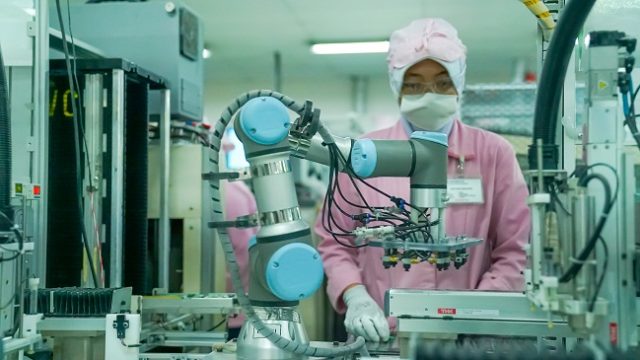Five Questions to Ask Before Automating
 1. What is your automation goal?
1. What is your automation goal?
People come to us with many reasons to automate. The most common reasons our customers bring to us is improved productivity, improved quality, reduced scrap, safety, and much more. A clearly defined and communicated goal prior to project launch will help ensure success before dollar one is spent. All too often we are brought in to fix a competitor’s solution where goals weren’t defined early enough, leading to disappointment and sometimes failure to execute.
2. What should I automate first?
Starting automation on your factory floor can be daunting. We recommend looking at new technologies to find the easiest application you have that is guaranteed to be successful. Automation can be broken down, so you can get your feet wet with easy applications and quick payback instead of jumping in headfirst. Starting small gives you the experience to understand the technology and its capabilities. After the first success, you will have a better idea of whether the tougher projects are viable or not. It’s easy to get caught up in automation. It’s exciting (trust us, we understand). However, customers often have grandiose automation ideas that can end up costing an arm and a leg. Our job is to find a cost effective, consistent solution that is often better suited than the original proposed idea.
3. Will the automation solution be safe?
This is a very common question and is at the heart of why collaborative robots were designed in the first place. You can find dozens of online videos showing “collaborative” robots performing all types of tasks. How safely any robot will interact with humans is first determined by how clearly defined the robots presentation, task performance and delivery of any automation project is outlined. Our goal is to help the customer address things like robot speed, collision concerns and force calculation. Humans are still the most amazing and agile ‘robots’ on the planet. Understanding fully the tasks to be automated and being sensitive regarding safety and surrounding will ensure a future where humans and robots work harmoniously together. This is a true collaboration between humans and robots. We suggest you partner with a supplier that can help you determine whether an application is collaborative or industrial and provide you with comprehensive risk assessments and collaborative calculations. It’s tempting to save money by deploying a solution yourself. However, an improperly applied collaborative robot that hurts a person can seriously damage a company’s reputation.
4. What impact will this have on existing employees?
There are many negative associations with robotics or automation these days. Robots are frequently viewed as a threat to people’s livelihoods, however, especially in the collaborative robot market, many employees find robots to be a welcome addition to the team. Robots can handle the dirty, dangerous, or dull jobs people don’t really want to do. By acquiring these difficult jobs, employees are left with more meaningful duties that robots just can’t complete.
5. How exactly will it handle my parts?
End-effectors or end-of-arm tooling is how the arm of the robot interacts with your product. We are often brought in to fix a competitor’s design. Make sure you work with a supplier that has experience with designing end-effectors. Don’t be afraid to ask for a proof of concept to show you the details ahead of time. You may have to pay a little more, but it is money well spent to know exactly that what you will be getting will work perfectly.